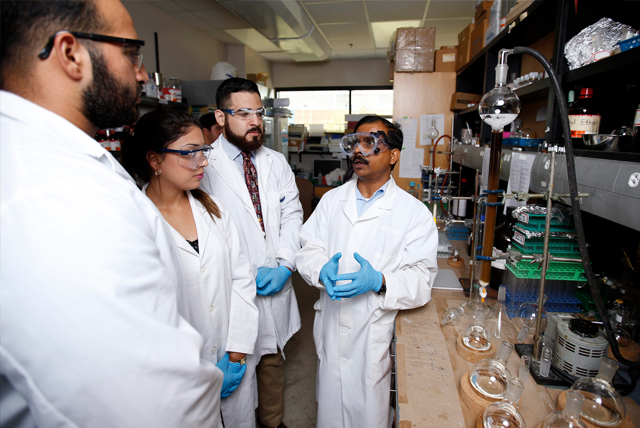Document Type
Article
Publication Date
1-10-1999
Abstract
The objective of the present study is to delineate the role of reactive oxygen species in drug-induced gastric hyperacidity and stress-induced gastric ulceration. We reported earlier that mercaptomethylimidazole (MMI), an antithyroid drug, induces gastric acid (HCl) secretion partially through H2receptor activation of the parietal cell by histamine release and partially through an intracellular mechanism. While studying the latter, MMI-induced acid secretion was found to correlate well with the inactivation of the peroxidase, an important H2O2metabolizing enzyme of the mucosa. MMI activates the isolated parietal cell for acid secretion, which is sensitive to omeprazole. Peroxidase and catalase activity of the isolated cell is also irreversibly inactivated by MMI. It thus creates a favourable condition for endogenous accumulation of H2O2. Acid secretion by gastric gland preparation or isolated gastric mucosa is stimulated by exogenous H2O2, which is inhibited by omeprazole. Studies indicate that H2O2inactivates the prostaglandin synthetase and removes the inhibitory influence of prostaglandin on acid secretion. MMI thus stimulates acid secretion not only through H2, receptor activation but also through the stimulation of the parietal cell by intracellular generation of H2O2following inactivation of the peroxidase-catalase system. Among the various factors responsible for gastric ulceration, stress was found to cause severe haemorrhagic lesions mainly through oxidative damage of the mucosa as indicated by increased lipid peroxidation, increased protein carbonyl content, and decreased glutathione level. The severity of ulcer correlates well with the time-dependent induction of superoxide dismutase and inactivation of peroxidase, a condition favourable for accumulation of endogenous H2O2. Desferrioxamine prevents stress ulcer, indicating involvement of transition metal ion in the process. Studies indicate that severity of stress ulcer is dependent on the concurrent generation of hydroxyl radical (•OH) formed through metal-catalysed Haber-Weiss reaction between O2-and H2O2.
Recommended Citation
Cai, Y.-C., Bullard, J. M., Thompson, N. L., & Spremulli, L. L. (2000). Interaction of Mitochondrial Elongation Factor Tu with Aminoacyl-tRNA and Elongation Factor Ts. Journal of Biological Chemistry, 275(27), 20308–20314. https://doi.org/10.1074/jbc.M001899200
First Page
55
Last Page
63
Publication Title
Current Science
DOI
10.2174/092986706776360842



Comments
© 1999 Indian Academy of Science. Original published version available at http://repository.ias.ac.in/100183/